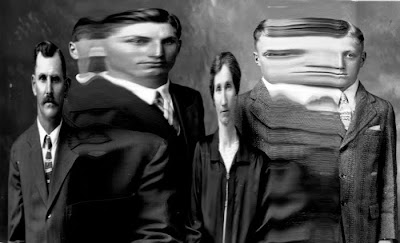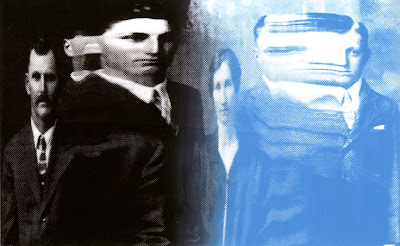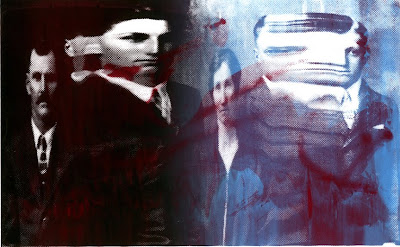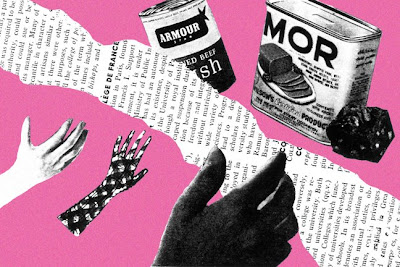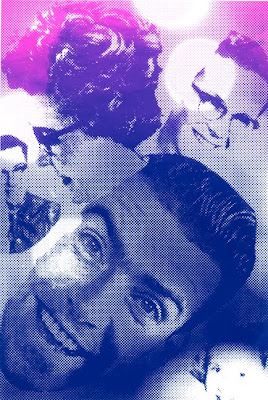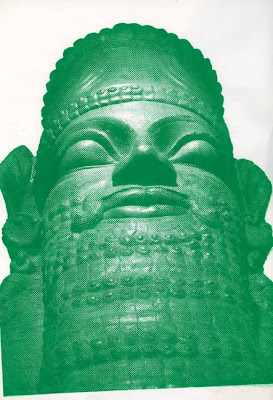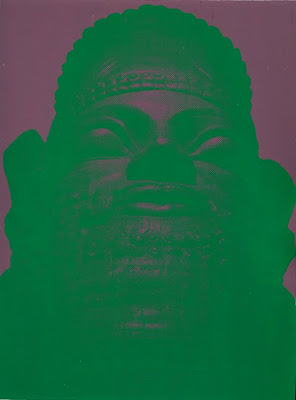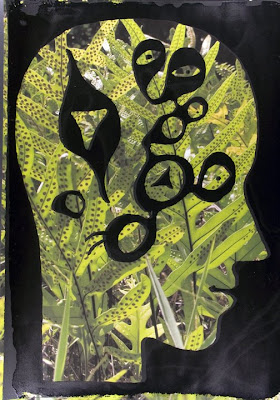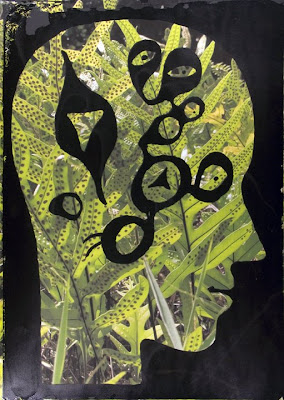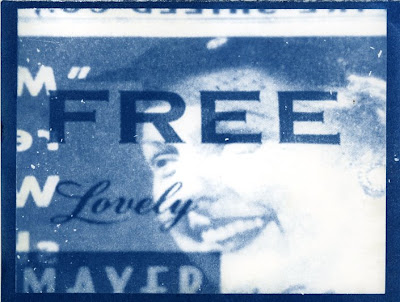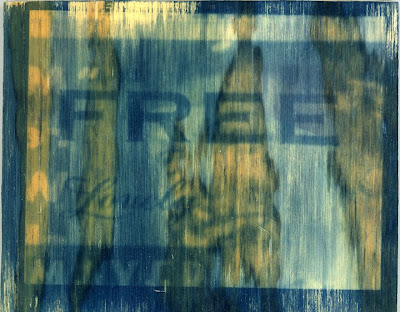
When Tom and Christie were married in September, Christie asked me to make Polaroid lifts of their wedding photos. It sounded like a great idea to me, except for one thing: Polaroid film is no longer being manufactured. I’d heard that Fuji instant film would work, but that the process was somewhat different than when using Polaroid film. So, I did some online research, and gave it a shot.
The basics are the same. If you’re using a Daylab (or in my case, a Vivitar slide printer I bought on Ebay), you need to start with slides. If you have a good quality flat screen monitor, it’s very easy. Load slide film into your camera, set it on auto, mount it to a tripod, open the images in Photoshop, hide all the menus, and shoot. The slides come out perfect. Based on my research, I over saturated the color on the photos a little before I shot slides of them, to compensate for a tendency of the transfers to look washed out.

The fuji film I used is FP-100C. It’s a color instant film the same size as Polaroid 669 film, and fits easily into the slide printer (Fuji also makes an instant black & white film, which I haven’t tried). Exposing the film was a little tricky. The Fuji film has a slightly different ISO than the Polaroid film, and the VIvitar slide printer has limited exposure adjustment. Try as I might, the prints all come out lacking details in the highlight areas, not a good thing when you’re making prints of a wedding dress. I actually think that the Fuji prints are high in contrast, as the dark areas of the prints also lost detail. The next time I try lifts with this film, I’ll try lowering the contrast of the images before shooting the slides to see if it improves things.
Aside from the contrast issue, the Fuji prints looked pretty good. The color balance is much better than the Polaroid 669 film, which always had a very distinct cyan cast (the Fuji black & white lifts show a cyan cast in the blacks, but I kind of like how it looks).

As for making the lifts, Fuji film is similar, but also quite different from Polaroid. FIrst, I found that warmer water to soak the prints in worked better. I did all my Polaroid lifts at 160 degrees F. Fuji film worked better around 180 degrees. The soak time was shorter, it took about 1-2 minutes in the hot water to loosen the emulsion on the Fuji film. After transferring the print to a tray of cool water, the emulsion easily slid off of the backing, with little fuss. That’s a big improvement over Polaroid film, which can be difficult to remove from the backing.
The Fuji emulsion has a very different feel from the Polaroid. It has an almost cellophane like crispness, unlike the mushy and easily damaged Polaroid emulsion. It can be handled quite a bit, something that would have left you with a tray of Polaroid soup. It’s a little less malleable than the Polaroid film, but not so much that you can’t get some good wrinkles and bends into the image. The one thing I really do not like about the Fuji film is that the edges of the emulsion tend to curl, and it can be very difficult to unroll it and get it to lie flat. Many of my lifts of the wedding photos have a distinct dark edge caused by this curling.
The reading I had done on Fuji lifts said that the Fuji emulsion would not stick to paper like Polaroid emulsion, and needed to be glued down. A couple of sources recommended picking up some of the ‘glue’ that held the emulsion to the backing, and spreading it on the receiving paper. I found this impossible. First off, there is no glue, it’s obviously gelatin. Secondly, the shorter soaking time means the gelatin does not dissolve. I found that coating the receiving paper with acrylic medium before transferring the emulsion to it worked much better.
Overall, I mostly liked the Fuji lifts. The color is a significant improvement over Polaroid 669 film, and the emulsion is easier to handle. I do wish it were a little more malleable, however, and the curling of the edges is really annoying. Maybe, if The Impossible Project decides to resurrect 669 film, they can solve the color issues, and we’ll have a great instant film for doing lifts.
Congratulations, Tom and Christie! I have 22 lifts from your wedding photos to give you when I see you next week.

